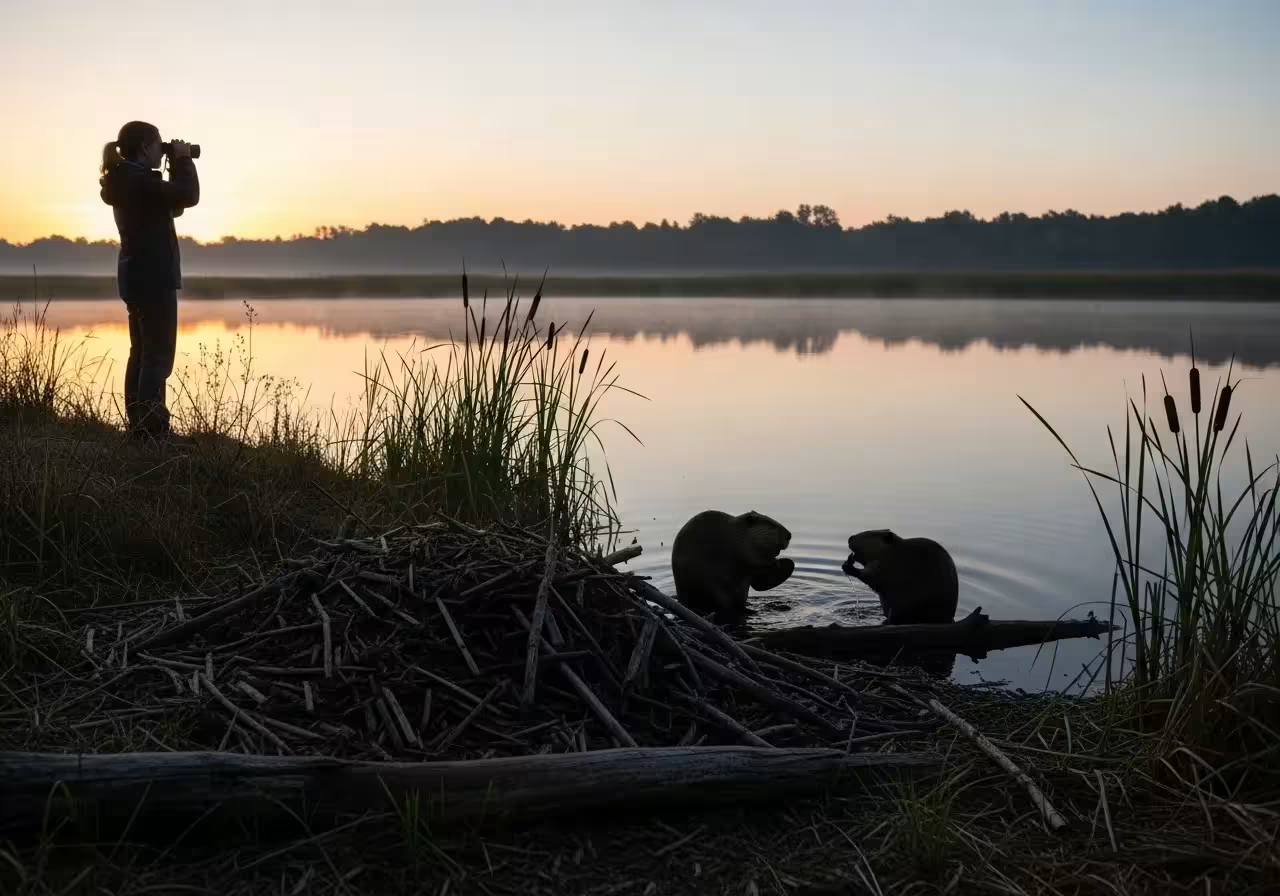
Observing Beavers Safely and Ethically
Witnessing a beaver at work is a memorable experience for any nature lover. However, like all wildlife observation, it must be done with respect for the animals and their habitat. Ethical viewing ensures that you can enjoy the experience without causing stress or harm to the beavers.
When and Where to Look
Beavers are primarily crepuscular, meaning they are most active during the hours of twilight—at dawn and dusk. Your best chance of seeing them is to find a known beaver pond and settle in quietly about an hour before sunset or just as the sun is rising. Look for them swimming near their lodge or along the edges of the pond as they emerge to patrol their dam and forage for food. They can be found in suitable freshwater habitats across most of North America.
Essential Gear for Observation
Patience is the most important tool. Beyond that, a good pair of binoculars is essential. They allow you to get a close-up view without getting physically close to the animals. A spotting scope can provide even greater magnification for stationary viewing. Consider bringing a small, portable stool or cushion for comfort, as you may be sitting still for a long time. Wearing neutral-colored clothing can help you blend into the background.
Rules of Respectful Observation
Following a few simple rules of conduct is vital for the well-being of the wildlife you are there to appreciate. These guidelines are consistent with advice from land management agencies like the U.S. National Park Service.
Keep Your Distance: This is the golden rule. Never approach a beaver, its lodge, or its dam. A safe viewing distance is at least 100 feet (about 30 meters), and farther is always better. A loud tail slap on the water is a clear sign that you are too close and the beaver feels threatened. If you cause an animal to change its behavior, you are too close.
Stay Quiet and Still: Move slowly and speak in whispers, if at all. Find a comfortable spot to sit and remain as still as possible. Sudden movements and loud noises will scare the beavers into retreating to the safety of their lodge.
Never Feed Beavers: Feeding wildlife is always a bad idea. It habituates them to humans, which can lead to dangerous situations for both people and animals. It also disrupts their natural foraging behaviors and can cause health problems.
Keep Pets Leashed and Away: A dog, even a friendly one, is perceived as a predator. Keep dogs leashed and well away from the water’s edge to avoid stressing the beavers and to protect your pet from a potential defensive encounter. Beavers are powerful animals with formidable teeth.
Do Not Disturb Dams or Lodges: It is critical to never walk on, dismantle, or otherwise damage a beaver dam or lodge. These structures are vital to the animals’ survival. Damaging them causes immense stress and forces the beavers to expend precious energy on repairs. In many jurisdictions, it is also illegal.















